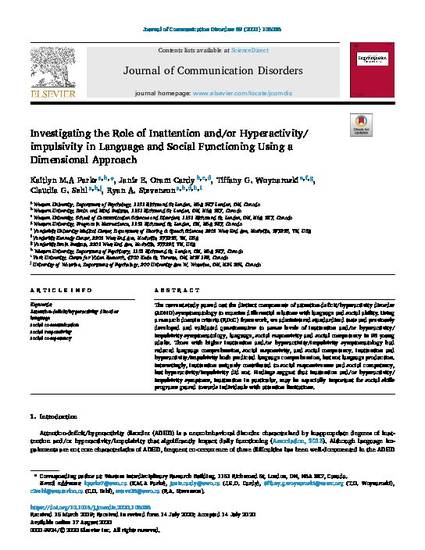
© 2020 Elsevier Inc. The current study parsed out the distinct components of attention-deficit/hyperactivity disorder (ADHD) symptomatology to examine differential relations with language and social ability. Using a research domain criteria (RDoC) framework, we administered standardized tests and previously developed and validated questionnaires to assess levels of inattention and/or hyperactivity/impulsivity symptomatology, language, social responsivity and social competency in 98 young adults. Those with higher inattention and/or hyperactivity/impulsivity symptomatology had reduced language comprehension, social responsivity, and social competency. Inattention and hyperactivity/impulsivity both predicted language comprehension, but not language production. Interestingly, inattention uniquely contributed to social responsiveness and social competency, but hyperactivity/impulsivity did not. Findings suggest that inattention and/or hyperactivity/impulsivity symptoms, inattention in particular, may be especially important for social skills programs geared towards individuals with attention limitations.
Kaitlyn M.A Parks, Janis E. Oram Cardy, Tiffany G. Woynaroski, Claudia G. Sehl, Ryan A. Stevenson, Investigating the Role of Inattention and/or Hyperactivity/impulsivity in Language and Social Functioning Using a Dimensional Approach, Journal of Communication Disorders, Volume 89, 2021, 106036, https://doi.org/10.1016/j.jcomdis.2020.106036. (https://www.sciencedirect.com/science/article/pii/S0021992420301040)
